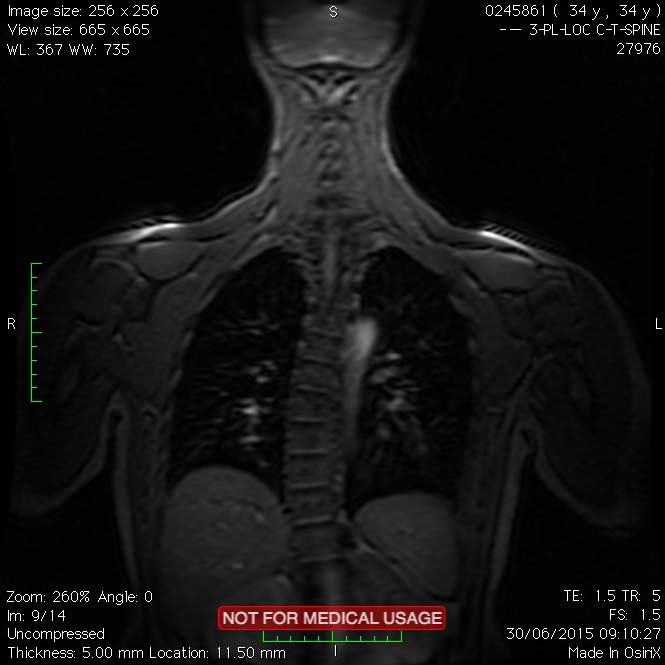
SCOLIOSIS AWARENESS MONTH… another one! We’ve had April for ankylosing spondylitis, May for osteoporosis and now June for scoliosis. I know everything seems to have it’s national day now, but these things deserve a whole month as they affect more people than you think, and of course are all personal for me as well as relevant for my line of work! It is thought that
With any chronic condition, you may not hear about it unless you get it. I certainly hadn’t heard of AS until my investigations were underway but as a therapist, I sure knew about scoliosis and in fact diagnosed my own while looking at an MRI with an orthopaedic surgeon and he said “oooohhh yeah, that could be a factor in your pain”. Facepalm
Anyway 5 quick facts:
1. Scoliosis or a curvature of the spine can come in different degrees and many different shapes! I have an ‘S’ shape curvature centred around T9 (the 9th thoracic vertebrae) but many people suffer a curve in a different area and/or a twist of the spine.
2. In around 8 in every 10 cases, the cause of scoliosis is unknown. This is called idiopathic scoliosis. Less commonly it can be associated with muscular dystrophy, cerebral palsy or lack of development of the bones in utero.
3. It generally develops around age 10-15.
4. It is slightly more common in females.
5. Yes, it can be really painful!
In my quest for myth-busting with this blog as well as sharing my experiences, I went to do some background reading with the Scoliosis Association UK. The list of common myths centres around the fact we cannot prevent it but is super encouraging about using physio and exercise for management. Yes, I’m going to mention Pilates!
Personally, I like to use Pilates as a diagnostic technique. I encourage my clients to take notice of their a-symmetry and make sure we are looking to balance the body with fairly equal strength and mobility. I have quite a task to balance on my left-hand side in side-lying work because my spine bends the other way. If you look at my MRI you can see how the muscles of my lower back have adapted and my left QL (quadratus lumbornum) is huge! Not to brag or anything…lol
This sort of muscular imbalance can be really problematic but it’s amazing how much pain relief you can find with regular treatment and the knowledge of how to deal with your personal issue with exercise. As ever, it’s not a one size fits all problem. I treat people of all ages as I truly believe massage and osteopathic techniques can support everyone in so many ways with both their physical and mental health, but everything I do must be personalised.
So, should you have a child or teenager who complains about an achy back, do take them seriously. Scoliosis can develop very quickly due to growth spurts at that age and cannot be predicted or avoided unfortunately. Severe cases can be helped by wearing a back brace or having major surgery but this is not always necessary so don’t panic about it and there is a huge amount you can do with physical therapy and exercise to manage the symptoms.

